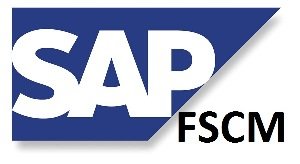
Q: What is SAP FSCM, and what are its main components?
A: SAP FSCM is a comprehensive suite of applications and tools designed to manage financial processes and optimize cash flow. Its main components include Credit Management, Collections Management, Dispute Management, and Treasury and Risk Management.
Q: How would you define Credit Management in SAP FSCM?
A: Credit Management in SAP FSCM involves evaluating the creditworthiness of customers, establishing credit limits, monitoring credit exposure, and managing credit risk. Its purpose is to ensure timely payments and minimize bad debt.
Q: Can you explain the functionalities of Collections Management in SAP FSCM?
A: Collections Management in SAP FSCM streamlines the collection process by prioritizing and automating collection activities. It provides tools for managing customer contacts, tracking payment promises, generating collection letters, and analyzing collection performance.
Q: What is Dispute Management in SAP FSCM, and why is it important?
A: Dispute Management in SAP FSCM facilitates the efficient handling and resolution of payment disputes with customers. It tracks and manages disputes, automates dispute resolution processes, and improves cash flow by reducing unresolved disputes and unapplied payments.
Q: How does Treasury and Risk Management fit into SAP FSCM?
A: Treasury and Risk Management is a vital component of SAP FSCM, enabling organizations to manage liquidity, cash positions, market risks, and financial transactions. It offers functionalities for cash and liquidity management, debt and investment management, and risk analysis.
Q: Describe the process of credit limit determination in SAP FSCM.
A: In SAP FSCM, credit limit determination involves analyzing customer data such as credit history, payment behavior, financial statements, and external credit information. Based on predefined rules and calculations, the system assigns appropriate credit limits to customers.
Q: What are the key features of SAP FSCM’s Collections Management?
A: The key features of SAP FSCM’s Collections Management include automatic worklist generation, prioritization of collection activities, aging analysis, dunning letter generation, promise-to-pay tracking, dispute integration, and collection performance reporting.
Q: How can Dispute Management in SAP FSCM help reduce DSO (Days Sales Outstanding)?
A: Dispute Management in SAP FSCM reduces DSO by facilitating the timely resolution of payment disputes. It streamlines dispute resolution processes, provides visibility into dispute status, and enables efficient communication and collaboration with customers and internal stakeholders.
Q: Explain how SAP FSCM supports cash and liquidity management.
A: SAP FSCM’s Treasury and Risk Management module offers features such as cash position forecasting, cash pooling, cash concentration, bank account management, and electronic bank statement processing. These functionalities help optimize cash utilization and enhance liquidity management.
Q: How can SAP FSCM help in mitigating credit risk?
A: SAP FSCM enables organizations to mitigate credit risk by evaluating customer creditworthiness, setting appropriate credit limits, monitoring real-time credit exposure, automating credit decision processes, and implementing proactive credit management strategies.
Q: What integration points does SAP FSCM have with other SAP modules?
A: SAP FSCM integrates with various SAP modules, including SAP FI (Financial Accounting), SAP SD (Sales and Distribution), SAP MM (Materials Management), SAP CRM (Customer Relationship Management), and SAP TRM (Treasury and Risk Management).
Q: How would you handle a customer dispute using SAP FSCM’s Dispute Management?
A: To handle a customer disputeusing SAP FSCM’s Dispute Management, I would first identify the dispute within the system. Then, I would gather all relevant information, such as invoices, payment details, and supporting documents. Next, I would assign the dispute to the appropriate department or individual for investigation and resolution. Throughout the process, I would maintain clear communication with the customer, keeping them informed of the progress and steps taken to resolve the dispute. Once resolved, I would update the status in the system and ensure that any necessary adjustments or credits are processed accordingly.
Q: Can you explain the concept of credit exposure in SAP FSCM?
A: Credit exposure in SAP FSCM refers to the potential financial risk an organization faces from customers’ outstanding payments. It represents the total amount of money that is at risk and is calculated by aggregating the unpaid balances of customers within a specified time period. By monitoring credit exposure in real-time, organizations can proactively manage credit risk and take appropriate actions to mitigate potential losses.
Q: How does SAP FSCM support cash flow optimization?
A: SAP FSCM supports cash flow optimization through various features. It enables organizations to streamline collection processes, accelerate cash inflows, and reduce days sales outstanding (DSO). Additionally, it provides tools for cash and liquidity management, allowing organizations to effectively manage cash positions, optimize working capital, and forecast future cash flows. By integrating financial processes and providing real-time insights, SAP FSCM helps organizations make informed decisions to improve cash flow.
- Q: What are some challenges organizations may face when implementing SAP FSCM? A: When implementing SAP FSCM, organizations may encounter several challenges, including:
- Data quality and accuracy: Ensuring that customer data, financial information, and credit-related data are accurate and up to date.
- Integration complexity: Managing the integration of SAP FSCM with existing SAP modules and other systems, which may require extensive configuration and testing.
- Change management: Effectively managing the transition to a new system, providing training to users, and ensuring stakeholder buy-in.
- Customization and configuration: Tailoring SAP FSCM to meet specific business requirements and aligning it with existing processes and workflows.
- Ongoing system maintenance and support: Providing continuous support, troubleshooting, and implementing system enhancements after the initial implementation phase.




